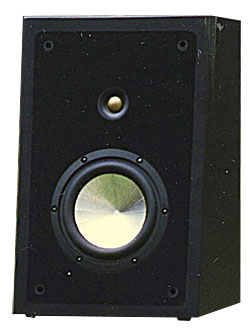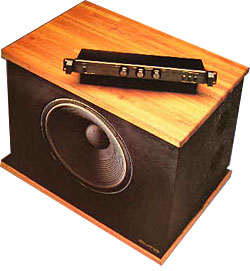Last Call for DIY Cans! Here's the Latest
The DIY headphone contest will be over on April 1st! If you want your cans measured and in the running, you'll need to get them in quickly as there's only a month left.
Want a look at the latest batch?
The DIY headphone contest will be over on April 1st! If you want your cans measured and in the running, you'll need to get them in quickly as there's only a month left.
Want a look at the latest batch?
 Ahmad Jamal’s new CD, Blue Moon (on Harmonia Mundi’s new Jazz Village label), is a wonder. Jamal is 82. He still possesses that spacious lightness of touch that knocked out Miles Davis over a half-century ago. But Jamal has since added to this elegance a syncopated boisterousness, a keenness for dynamics, and an adventurous way with mixing and merging styles.
Ahmad Jamal’s new CD, Blue Moon (on Harmonia Mundi’s new Jazz Village label), is a wonder. Jamal is 82. He still possesses that spacious lightness of touch that knocked out Miles Davis over a half-century ago. But Jamal has since added to this elegance a syncopated boisterousness, a keenness for dynamics, and an adventurous way with mixing and merging styles.
Listen to what he does with the title tune, loping on not only a slow-simmer Latin rhythm but also a bass line (which occasionally gets passed to the piano, then the drums) from the refrain of Coltrane’s “A Love Supreme.” Or the album’s first track, an original called “Autumn Rain,” where Jamal coaxes clusters of chords, then a sprightly melody, over drummer Herlin Riley’s raucous backbeat.
Wednesday, February 29, 5–9pm: Definitive Audio (6206 Roosevelt Way NE, Seattle, WA) will host an evening devoted to the reproduction of music and the joy of listening. Stereophile’s Editor John Atkinson and Assistant Editor/Entry Level columnist Stephen Mejias will be giving presentations in the Wilson/D’Agostino and Linn rooms, respectively.
The album utilizes Batoh’s Brain Pulse Music (BPM) machine, a wildly futuristic device partnered with headgear, goggles, and a motherboard, said to be developed and built by MKC, Inc. The BPM machine, editions of which will also be available for sale from Drag City, monitors brain waves and transmits them via radio waves to the motherboard, which, in turn, converts the radio waves into pulses that are then outputted as sound.
To be moved by Sharon Van Etten’s warm, sensuous voice, the remarkable power and soul in her phrasing and delivery, the heaviness of her sad words, you need only listen to her latest album, Tramp (see my review in the March issue, on sale now). Its effects are immediate. To be absolutely captivated, charmed, dazzled by her presence and promise, to want to get to know her better, it helps to see Van Etten perform live.
On Saturday, February 25th, Sharon Van Etten walked out onto the stage before a packed house at Manhattan’s Bowery Ballroom. She wears a red dress, black heels, a guitar, and an honest smile.
Hosted by Stereophile's John Marks, on Saturday February 4, the Connecticut Audio Society and the Boston Audio Society held a joint meeting in Providence, Rhode Island at The First Baptist Church in America. The Third Meeting House of the Church (17741775) is a US National Historical Landmark. The Auditorium retains almost all of its original 1775-vintage horsehair plaster, which contributes to its excellent acoustics.
The event was a Workshop on "Making Good Recordings in a Church." Those so interested were invited to bring their own recording gear to the Church; the 48 attendees brought everything from shirt-pocket recorders to imposing surround-sound arrays. Before the formal start of the workshop, those in attendance were invited to participate in a Mid-Side Microphone Technique "Petting Zoo." Minister of Music Stephen T. Martorella, featured in the opening photo, played a Scriabin Prelude on a Steinway grand piano as a sound source.
 Ten seconds to ignition. Relax, buckle in, and welcome to Stereophile's Good Times time machine. Flux capacitors fully energized. Ignition. Not to worry, that slight tingling sensation is perfectly normal. Roll back your calendar to...June 28, 1933. We're at the Eighth Annual convention of the Institute of Radio Engineers in Chicago. Harry Olsen is on the podium, describing a new wide-range cone loudspeaker for high-fidelity sound reproduction.
Ten seconds to ignition. Relax, buckle in, and welcome to Stereophile's Good Times time machine. Flux capacitors fully energized. Ignition. Not to worry, that slight tingling sensation is perfectly normal. Roll back your calendar to...June 28, 1933. We're at the Eighth Annual convention of the Institute of Radio Engineers in Chicago. Harry Olsen is on the podium, describing a new wide-range cone loudspeaker for high-fidelity sound reproduction.
Quiet, please, Mr. Olsen is about to describe the disadvantages of multipledrive-unit systems. "The radiating surfaces must be separated by a finite distance, with the result that this system will exhibit peculiar directional characteristics in the overlap region where the sound radiation issues from both sources. To reduce this effect to a minimum, the overlap region must be confined to a very small range which requires an elaborate electric filter system for allocating the frequency bands of the units. The greater space required for the two loudspeakers is another important factor. The cost of two separate field structures and vibrating systems will be considerably greater than that of a single unit."
 Welcome back, Ladies and Gentlemen, to the continuing saga of the Englishman's Search for True Bass. In the previous episode (footnote 1), you witnessed Our Hero tussling with the problems of ported vs sealed-box woofer loading for full-range speaker systems. His conclusion? That ported designs may offer low-frequency quantity but it always seems to be at the expense of quality. If it's bass quality you want, you are better off with well-tuned sealed boxes, which explains why he is an unashamed fan of relatively small speakers with fast, tight upper bass. In this month's thrilling installment, JAstiff upper lip thrust forwardwrestles with the problems of extending the bass response of his preferred speakers with a subwoofer from the Californian company of Sumo! Now read on . . .
Welcome back, Ladies and Gentlemen, to the continuing saga of the Englishman's Search for True Bass. In the previous episode (footnote 1), you witnessed Our Hero tussling with the problems of ported vs sealed-box woofer loading for full-range speaker systems. His conclusion? That ported designs may offer low-frequency quantity but it always seems to be at the expense of quality. If it's bass quality you want, you are better off with well-tuned sealed boxes, which explains why he is an unashamed fan of relatively small speakers with fast, tight upper bass. In this month's thrilling installment, JAstiff upper lip thrust forwardwrestles with the problems of extending the bass response of his preferred speakers with a subwoofer from the Californian company of Sumo! Now read on . . .
In our “Becoming an Audiophile” series, readers share stories of how they got into the hi-fi hobby. This is the story of how Bill Pauluh became an audiophile.